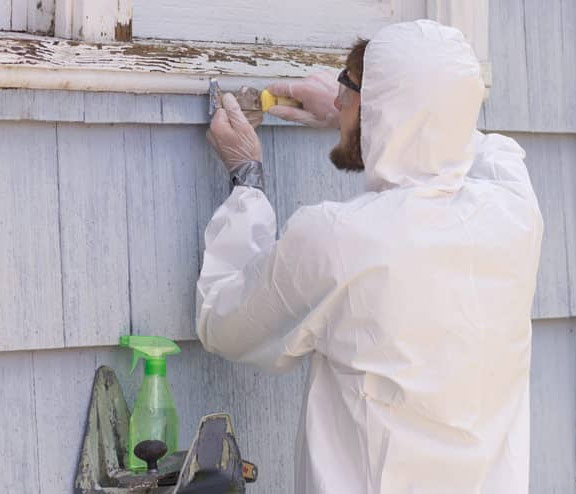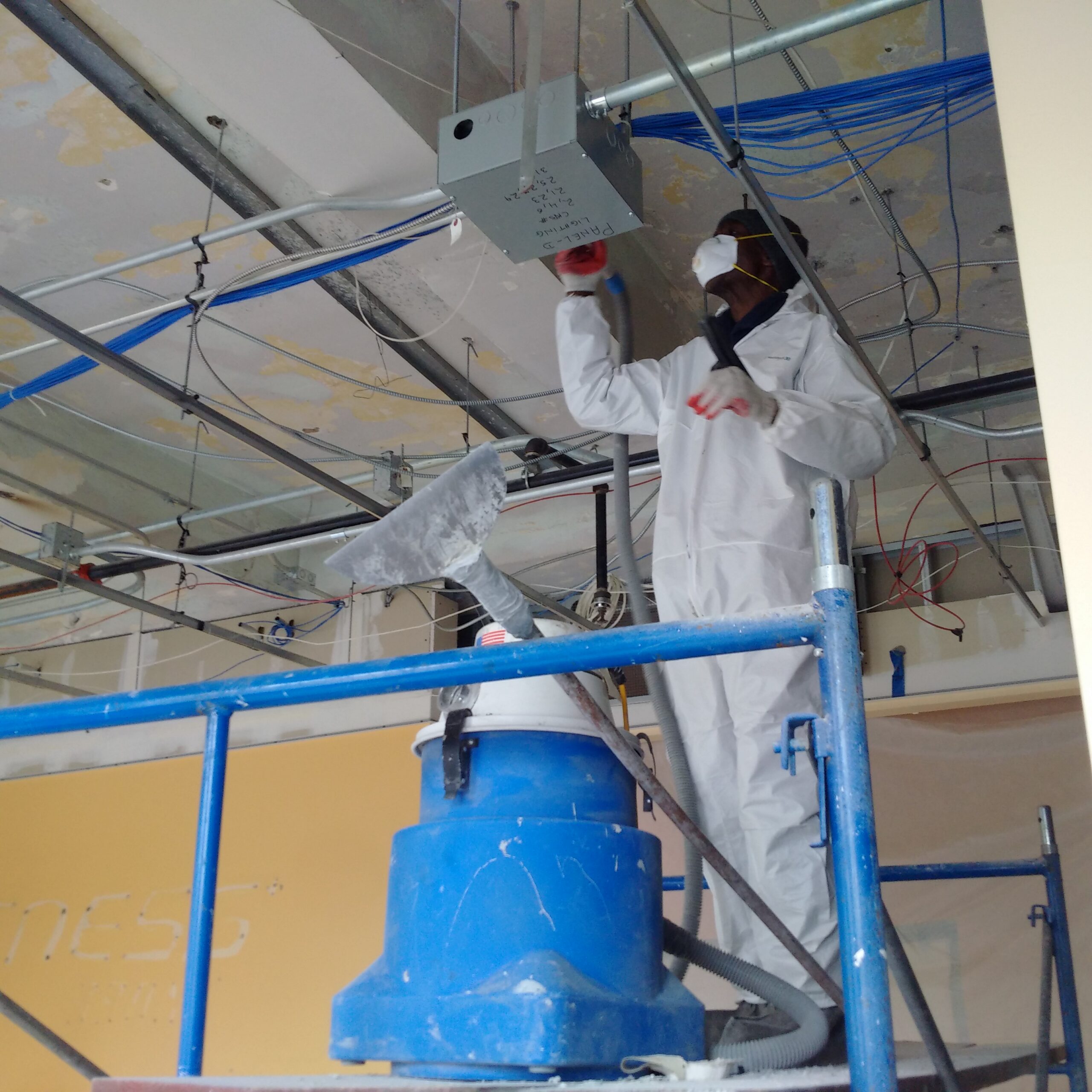Step-by-Step Process for Successful Lead Violation Remediation
Following this, adherence to federal and state regulations is critical to creating an effective remediation plan. The real removal requires proficient employees to implement these plans while purely complying with safety procedures. What occurs after the removal is finished?

Discovery and Assessment
Detection and evaluation are critical steps in the remediation of lead violations. To guarantee a reliable remediation process, it is crucial to conduct a comprehensive evaluation of the environment where potential lead exposure exists.
This consists of evaluating the level and intensity of contamination, as well as identifying populations at threat, particularly youngsters and expectant ladies. The gathered data should be carefully recorded to sustain the advancement of an effective removal approach.
Furthermore, it is vital to prioritize locations with the highest possible levels of contamination and those that pose the best health and wellness risks. Reliable interaction with stakeholders, consisting of residential property owners, residents, and public wellness officials, is crucial for guaranteeing that all celebrations are informed regarding the findings and the succeeding steps needed for remediation. This initial detection and assessment phase lays the foundation for a successful lead violation removal process.

Lawful and Regulative Compliance
Browsing the landscape of legal and regulatory conformity is a crucial element of successful lead offense remediation. Conformity ensures not only the safety and security of affected populaces however likewise the reputation and legal standing of the organization in charge of remediation. Rules governing lead contamination are complex, including government, state, and regional regulations. At the federal degree, the Environmental Defense Company (EPA) sets rigid standards under the Hazardous Substances Control Act (TSCA) and the Lead-Based Paint Remodelling, Repair Service, and Painting Policy (RRP Regulation)
State and local regulations can differ, frequently imposing added responsibilities or even more stringent standards. As a result, an extensive understanding of all appropriate legal structures is crucial. This includes meticulous documentation of all remediation tasks to demonstrate compliance. Failure to stick to these laws can result in serious fines, including large penalties, lawsuit, and reputational damages.
Involving legal professionals specialized in environmental law can assist in navigating these intricacies. Routine training and accreditation for all personnel associated with the removal process are also required to make certain adherence to security and governing standards. By focusing on lawful and governing conformity, companies can successfully minimize threats and accomplish a successful remediation end result.
Planning the Removal
Successfully planning the remediation of lead infractions starts with a thorough analysis of the contaminated site. This data-driven technique makes sure that removal initiatives are suitably targeted and efficient.
As soon as the contamination is mapped, a danger assessment must be carried out to assess possible health and wellness risks to human beings and the atmosphere. Lead Violation Removal in NYC. This assessment must think about aspects such as exposure pathways, population vulnerability, and ecological impacts. The insights collected will create the basis for picking an ideal removal strategy
Ultimately, establishing clear, possible purposes for the remediation task is vital. These goals must line up with regulative standards and stakeholder assumptions to ensure conformity and neighborhood approval. Establishing a thorough removal plan that lays out approaches, timelines, and source allocation will certainly promote an organized strategy to the cleaning procedure.
Additionally, it is important to engage with stakeholders early and maintain transparent communication throughout the preparation stage. This includes informing local communities, obtaining necessary authorizations, and collaborating with regulative agencies to ensure all lawful and step-by-step demands are met. A well-crafted removal strategy not only addresses the contamination effectively but additionally develops trust and cooperation check my blog amongst all celebrations involved.
Implementing the Removal
With a well-structured removal plan in position, the focus shifts to the real execution of the remediation tasks. This phase includes activating the required sources, including competent employees, specific equipment, and top notch materials. Begin by plainly delineating duties and responsibilities to make certain accountability and smooth sychronisation among group members.
The first action in execution is to secure additional info the site. This consists of establishing containment locations to stop lead dirt and debris from dispersing, along with employing air purification systems to maintain air high quality. Next off, proceed with the removal of lead-based products. Utilize techniques such as damp scuffing, chemical removing, or encapsulation, depending on the seriousness and area of the contamination. It is crucial to abide by safety methods, including the usage of individual safety equipment (PPE) and appropriate disposal of harmful products.
Throughout the remediation process, conduct regular examinations and air top quality keeping an eye on to guarantee compliance with regulative requirements. Efficient communication with stakeholders, consisting of home owners and occupants, is critical to maintain them notified of progression and any kind of unexpected developments. By carefully following these steps, the remediation activities can be executed efficiently and properly, inevitably mitigating lead threats.
Post-Remediation Techniques
Post-remediation strategies play a crucial role in ensuring the lasting success of lead offense remediation efforts. These techniques encompass recurring tracking, maintenance, and community education and learning to avoid future lead direct exposure and make sure a safe setting.
First, routine monitoring is vital. This includes periodic screening of the previously influenced areas to ensure that lead degrees stay within safe restrictions. Building owners should develop a schedule for these examinations, ideally in cooperation with licensed ecological experts.

Third, enlightening the neighborhood plays a pivotal duty in maintaining the advantages of remediation. Homeowners and building managers need to be informed concerning the dangers of lead direct exposure and the most effective practices for preserving a lead-safe setting. Workshops, informative pamphlets, and area meetings can be efficient devices for distributing this details.
Conclusion
Effective lead violation removal calls for an extensive, organized approach encompassing discovery and assessment of contamination, adherence to legal and governing standards, careful preparation, and effective execution of removal initiatives. Post-remediation techniques, consisting of continual monitoring and neighborhood education and learning, are important to sustain a lead-safe atmosphere. Partnership with environmental specialists guarantees continuous conformity and defense of public health. This methodical process highlights the value of thoroughness and watchfulness in dealing with and alleviating lead contamination.